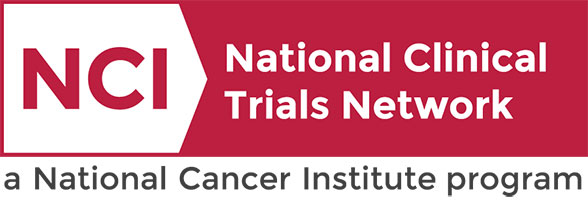Patient Search
 |
 |
|
KaCrole Higgins was diagnosed with breast cancer in 2020. “In May 2020, I found a lump in my breast. I cried. By June, it was diagnosed as breast cancer, triple positive, stage 1A. While getting this cancer diagnosis was devastating, it also became an opportunity. Suddenly, the cancer gave me clarity. It gave me clarity about what was important, what was good in my life, what was toxic in my life, and what I needed to do.” Click below to read more of KaCrole’s story |
If Landon Ryan had been diagnosed with bilateral retinoblastoma 10, 20 or 30 years ago, she might not be here today with nearly perfect vision.Thanks to recent improvements in the treatment for this rare form of cancer that almost exclusively affects children under the age of 5, the diagnosis had the power to change Landon’s life when she was 11 months old, but not to take it — or her eyesight. Click below to learn more about Landon and her story. https://momentum.vicc.org/2022/04/brighter-outlook/ |
Sequential Therapy in Multiple Myeloma Guided by MRD Assessments
Multiple Myeloma
Multiple Myeloma
This research study will determine the proportion of patients with lowest minimal residual disease (MRD) response obtainable after receiving 6 cycles of study treatment. Minimal residual disease is multiple myeloma cells below the level of 1 cancer cell out of 100,000 in the bone marrow.
For patients who become MRD "negative" (i.e. less than 1 cancer cell out of 100,000) at the end of 6 cycles of therapy, this study will study if that good response can be maintained with 3 additional cycles of treatment instead of use of autologous hematopoietic cell transplantation (AHCT).
For patients who are MRD "positive" at the end of 6 cycles of therapy, this study will answer whether more patients can become and remain MRD "negative" with AHCT plus teclistamab in combination with daratumumab when compared with patients who undergo AHCT followed by lenalidomide (an established anti-myeloma drug) plus daratumumab.
For patients who become MRD "negative" (i.e. less than 1 cancer cell out of 100,000) at the end of 6 cycles of therapy, this study will study if that good response can be maintained with 3 additional cycles of treatment instead of use of autologous hematopoietic cell transplantation (AHCT).
For patients who are MRD "positive" at the end of 6 cycles of therapy, this study will answer whether more patients can become and remain MRD "negative" with AHCT plus teclistamab in combination with daratumumab when compared with patients who undergo AHCT followed by lenalidomide (an established anti-myeloma drug) plus daratumumab.
Multiple Myeloma
II
Baljevic, Muhamed
NCT05231629
VICC-ITPCL23014
Avelumab With Binimetinib, Sacituzumab Govitecan, or Liposomal Doxorubicin in Treating Stage IV or Unresectable, Recurrent Triple Negative Breast Cancer
Breast
Breast
This phase II trial studies how well the combination of avelumab with liposomal doxorubicin with or without binimetinib, or the combination of avelumab with sacituzumab govitecan works in treating patients with triple negative breast cancer that is stage IV or is not able to be removed by surgery (unresectable) and has come back (recurrent). Immunotherapy with checkpoint inhibitors like avelumab require activation of the patient's immune system.
This trial includes a two week induction or lead-in of medications that can stimulate the immune system. It is our hope that this induction will improve the response to immunotherapy with avelumab. One treatment, sacituzumab Govitecan, is a monoclonal antibody called sacituzumab linked to a chemotherapy drug called SN-38. Sacituzumab govitecan is a form of targeted therapy because it attaches to specific molecules (receptors) on the surface of tumor cells, known as Tumor-associated calcium signal transducer 2 (TROP2) receptors, and delivers SN-38 to kill them. Another treatment, liposomal doxorubicin, is a form of the anticancer drug doxorubicin that is contained in very tiny, fat-like particles. It may have fewer side effects and work better than doxorubicin, and may enhance factors associated with immune response. The third medication is called binimetinib, which may stop the growth of tumor cells by blocking some of the enzymes needed for cell growth, and may help activate the immune system. It is not yet known whether giving avelumab in combination with liposomal doxorubicin with or without binimetinib, or the combination of avelumab with sacituzumab govitecan will work better in treating patients with triple negative breast cancer.
This trial includes a two week induction or lead-in of medications that can stimulate the immune system. It is our hope that this induction will improve the response to immunotherapy with avelumab. One treatment, sacituzumab Govitecan, is a monoclonal antibody called sacituzumab linked to a chemotherapy drug called SN-38. Sacituzumab govitecan is a form of targeted therapy because it attaches to specific molecules (receptors) on the surface of tumor cells, known as Tumor-associated calcium signal transducer 2 (TROP2) receptors, and delivers SN-38 to kill them. Another treatment, liposomal doxorubicin, is a form of the anticancer drug doxorubicin that is contained in very tiny, fat-like particles. It may have fewer side effects and work better than doxorubicin, and may enhance factors associated with immune response. The third medication is called binimetinib, which may stop the growth of tumor cells by blocking some of the enzymes needed for cell growth, and may help activate the immune system. It is not yet known whether giving avelumab in combination with liposomal doxorubicin with or without binimetinib, or the combination of avelumab with sacituzumab govitecan will work better in treating patients with triple negative breast cancer.
Breast
II
Abramson, Vandana
NCT03971409
VICCBRE1987
A Study With Tovorafenib (DAY101) as a Treatment Option for Progressive, Relapsed, or Refractory Langerhans Cell Histiocytosis
This phase II trial tests the safety, side effects, best dose and activity of tovorafenib (DAY101) in treating patients with Langerhans cell histiocytosis that is growing, spreading, or getting worse (progressive), has come back (relapsed) after previous treatment, or does not respond to therapy (refractory). Langerhans cell histiocytosis is a type of disease that occurs when the body makes too many immature Langerhans cells (a type of white blood cell). When these cells build up, they can form tumors in certain tissues and organs including bones, skin, lungs and pituitary gland and can damage them. This tumor is more common in children and young adults. DAY101 may stop the growth of cancer cells by blocking some of the enzymes needed for cell growth. Using DAY101 may be effective in treating patients with relapsed or refractory Langerhans cell histiocytosis.
Not Available
II
Not Available
NCT05828069
VICC-NTPED24012
A Study Using Nivolumab, in Combination With Chemotherapy Drugs to Treat Nasopharyngeal Carcinoma (NPC)
This phase II trial tests effects of nivolumab in combination with chemotherapy drugs prior to radiation therapy patients with nasopharyngeal carcinoma (NPC). Immunotherapy with monoclonal antibodies, such as nivolumab, may help the body's immune system attack the cancer, and may interfere with the ability of tumor cells to grow and spread. Chemotherapy drugs, such as gemcitabine and cisplatin, work in different ways to stop the growth of tumor cells, either by killing the cells, by stopping them from dividing, or by stopping them from spreading. Radiation therapy uses high energy x-rays, particles, or radioactive seeds to kill cancer cells and shrink tumors. Researchers want to find out what effects, good and/or bad, adding nivolumab to chemotherapy has on patients with newly diagnosed NPC. In addition, they want to find out if children with NPC may be treated with less radiation therapy and whether this decreases the side effects of therapy.
Not Available
II
Not Available
NCT06064097
VICC-NTPED24105
Belzutifan/MK-6482 for the Treatment of Advanced Pheochromocytoma/Paraganglioma (PPGL), Pancreatic Neuroendocrine Tumor (pNET), Von Hippel-Lindau (VHL) Disease-Associated Tumors, Advanced Gastrointestinal Stromal Tumor (wt GIST), or Solid Tumors With HIF-2 Related Genetic Alterations (MK-6482-015)
Multiple Cancer Types
This is a study to evaluate the efficacy and safety of belzutifan monotherapy in participants with advanced pheochromocytoma/paraganglioma (PPGL), pancreatic neuroendocrine tumor (pNET), von Hippel-Lindau (VHL) disease-associated tumors, advanced wt (wild-type) gastrointestinal stromal tumor (wt GIST), or advanced solid tumors with hypoxia inducible factor-2 alpha (HIF-2) related genetic alterations. The primary objective of the study is to evaluate the objective response rate (ORR) of belzutifan per response evaluation criteria in solid tumors version 1.1 (RECIST 1.1) by blinded independent central review (BICR).
Endocrine,
Pancreatic
II
Ramirez, Robert
NCT04924075
VICCMD2132
Study of Arlocabtagene Autoleucel (BMS-986393) a GPRC5D-directed CAR T Cell Therapy in Adult Participants With Relapsed or Refractory Multiple Myeloma
Multiple Myeloma
Multiple Myeloma
The purpose of this study is to evaluate the effectiveness and safety of Arlocabtagene Autoleucel (BMS-986393) in participants with relapsed or refractory multiple myeloma.
Multiple Myeloma
II
Baljevic, Muhamed
NCT06297226
VICC-DTCTT23527
Testing What Happens When an Immunotherapy Drug (Pembrolizumab) is Given by Itself Compared to the Usual Treatment of Chemotherapy With Radiation After Surgery for Recurrent Head and Neck Squamous Cell Carcinoma
Head/Neck
Head/Neck
This phase II trial studies the effect of pembrolizumab alone compared to the usual approach (chemotherapy \[cisplatin and carboplatin\] plus radiation therapy) after surgery in treating patients with head and neck squamous cell carcinoma that has come back (recurrent) or patients with a second head and neck cancer that is not from metastasis (primary). Radiation therapy uses high energy radiation or protons to kill tumor cells and shrink tumors. Cisplatin is in a class of medications known as platinum-containing compounds. It works by killing, stopping or slowing the growth of cancer cells. Carboplatin is also in a class of medications known as platinum-containing compounds. It works in a way similar to the anticancer drug cisplatin, but may be better tolerated than cisplatin. Carboplatin works by killing, stopping or slowing the growth of cancer cells. Immunotherapy with monoclonal antibodies, such as pembrolizumab, may help the body's immune system attack the cancer and may interfere with the ability of tumor cells to grow and spread. Giving pembrolizumab alone after surgery may work better than the usual approach in shrinking recurrent or primary head and neck squamous cell carcinoma.
Head/Neck
II
Choe, Jennifer
NCT04671667
ECOGHNEA3191
A Phase 2 Study of Blinatumomab (NSC# 765986, IND# 125462) in Combination with Nivolumab (NSC# 748726, IND# 125462), a Checkpoint Inhibitor of PD-1, in B-ALL Patients Aged >/=1 to <31 Years Old with First Relapse
Not Available
II
Not Available
NCT04546399
COGAALL1821
A Phase II Trial of Avelumab or Hydroxychloroquine with or without Palbociclib to Eliminate Dormant Breast Cancer ( PALAVY )
Breast
Breast
Breast
II
Reid, Sonya
NCT04841148
VICCBRE2161


